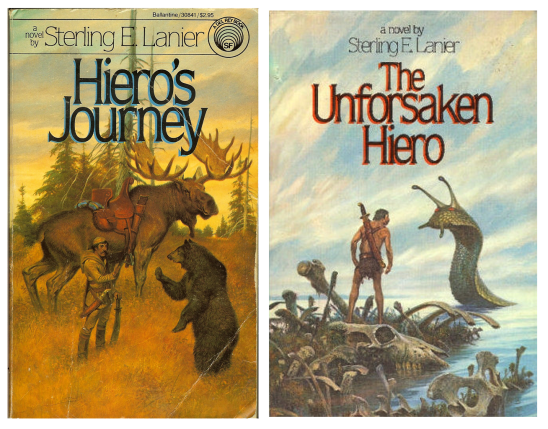I really like cyber-punk science fiction. Cyber-punk tends be have a very film noir feel to it, dark, gritty, uncomfortable, often with an interesting blend of action and introspection. It is usually set in a future just around the corner at a time when the lines between human and machine, real and virtual, biological and… other are increasing blurred. If cyber-punk had to be summed up in one word, that word would be future shock. Ok, so that’s two words. William Gibson’s Neuromancer and Neil Stephenson’s Snow Crash are quintessential examples of this genre and remain ground-breaking novels. George Alec Effinger’s When Gravity Fails is another interesting take on this genre, but again it is set in a time right nearby, a time that most of us alive now may live to see.
There is one series, however, that has strong cyber-punk elements, but takes place further out in the future after humans have settled other worlds and have more-or-less adapted to the future they find themselves in. The Takashi Kovacs series by Rickard K. Morgan.

Richard K. Morgan’s Takashi Kovacs series
Humans have spread to the stars, following maps found from an extinct alien settlement on Mars. Physically moving between the stars is limited to light speed, but communication, transfer of information, takes place at nearly instantaneous speeds via “needlecast”.
The protagonist, Takashi Kovacs (pronounced Ko-vachs), also known by his old gang names Mamba Lev and One Hand Rending, is an ex-Envoy, an ultra-elite branch of the Protectorate army, restricted by law from holding any position of authority and now turned to a life of crime. All of what goes into defining a person is carried in a surgically implanted storage cylinder implanted in the vertebrae at the base of the neck. Bodies, sleeves, are interchangeable, many heavily customized for various purposes.
When a local political situation goes awry the envoys are sent in via needlecast, their minds loaded into new sleeves, and sent out to bring the errant forces back in line with the desires of the protectorate governemnt. Their training is mental, for adaptability, perception, and ruthlessness. Takashi Kovacs resigned from the envoy force and the story tightly follows him across several worlds in and out of morally ambiguous situations.
First off, the stories are fun, very much so. The detail is rich and the close focus on the protagonist provides a chance to empathize with and understand his perspective. The way Mr. Morgan has developed the personality transfer technology and easily transferable bodies raises the question of what it means to be human, the possibility of double sleeving (running two copies of yourself in different bodies) raises the question of what it means to be yourself. Morality is a definite theme through the books and Takashi Kovacs is more of a charismatic anti-hero than anything else.
There is an interesting overarching story as well concerning the aliens that left behind the maps humans followed into space.
The writing is crisp, the descriptions vibrant, and the characters interesting. Richard K. Morgan has a tendency for unnecessarily descriptive sex scenes, probably in an attempt to be edgy.
The other book of his I really like is Market Forces, a near future story of a vicious corporate executive working in an even more vicious world where corporations sponsor numerous small wars for their benefit. This books is an homage to Rollerball (the 1975 movie, not the 2002 movie), Mad Max, and RoadWarrior.

Richard K. Morgan’s Market Forces
He pays homage to Bladerunner in Th1rte3n, released in the UK as Black Man. This is an exploration of racism via a US engineered super-soldier who has returned to Earth from exile on Mars. The story is decent, but not as interesting as either the Takashi Kovacs series or Market Forces.

Richard K. Morgan’s Th1rte3n, also released as Black Man
Get a copy of the Takashi Kovacs series. it’s fun reading.




